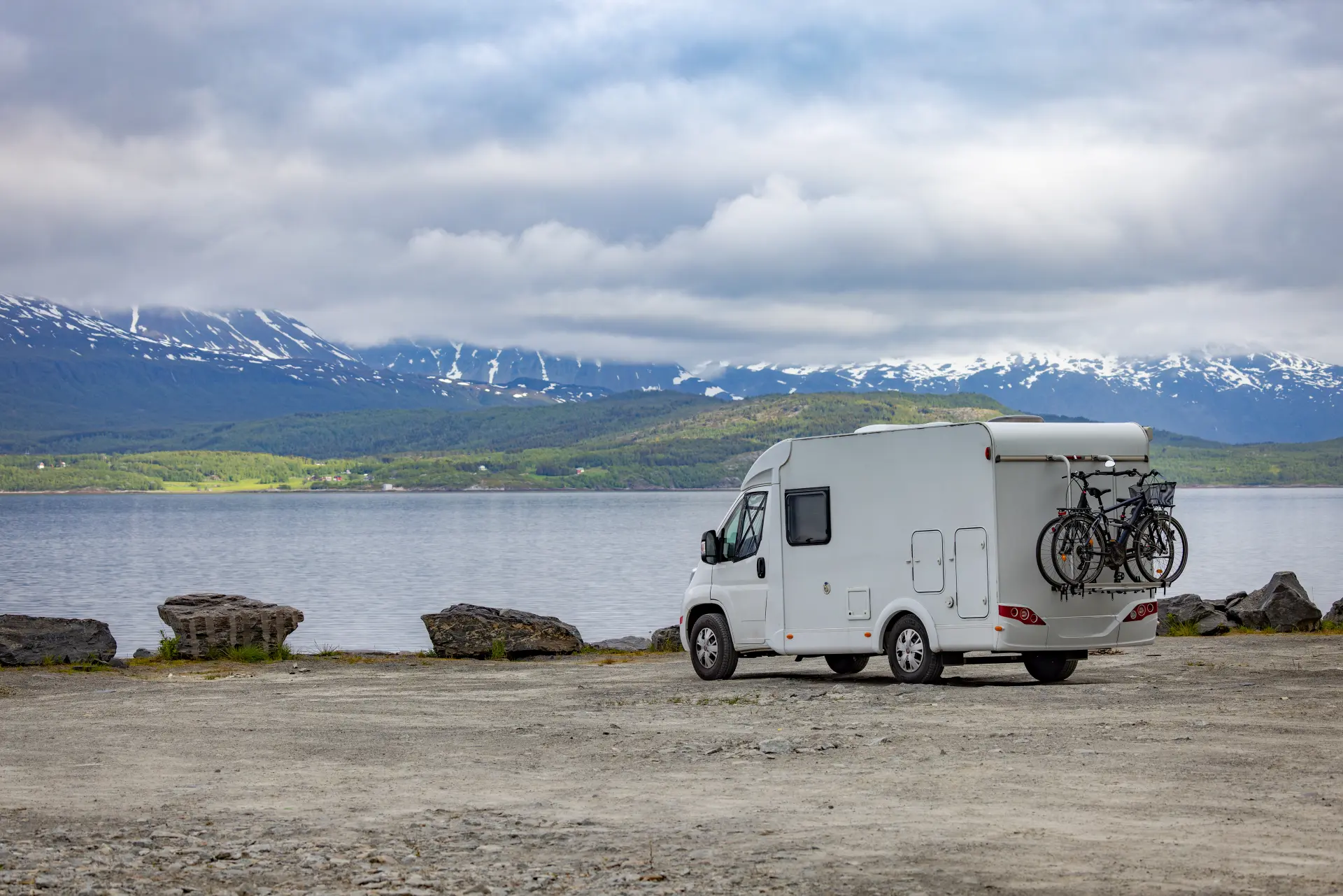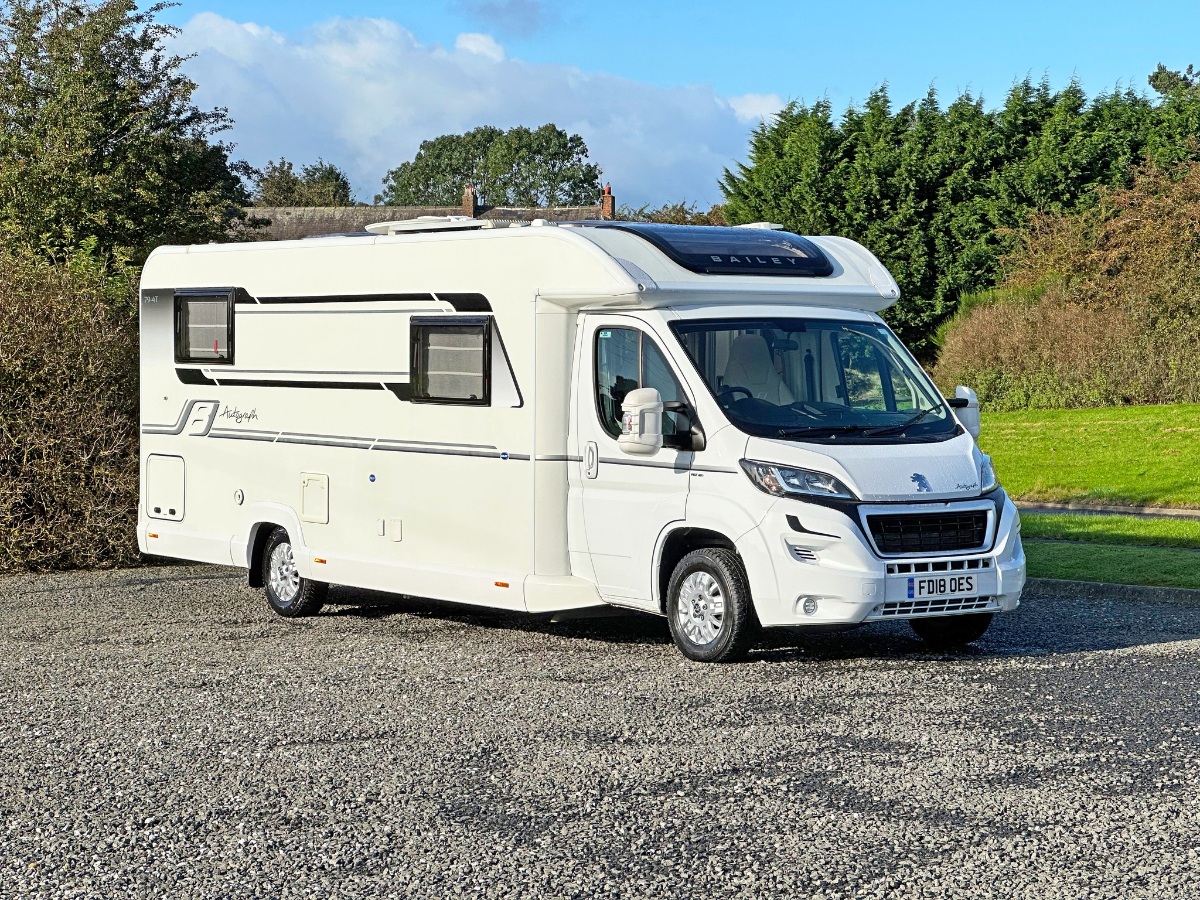How can I stay safe on my motorhome travels? In this article, we cover motorhome speed limits, whether passengers need to wear seatbelts, and more.
Can Passengers Sleep In A Motorhome While Driving?
Motorhome travels are an exciting way to explore, but ensuring safety should always be at the forefront of the experience. A question we frequently encounter is, "Can passengers enjoy a nap in a motorhome during the journey?" The answer, surprisingly, isn't as straightforward as one might think.
Both "yes" and "no" could be valid responses, depending largely on the situation and level of precaution taken. From a safety perspective, it's worth noting that catching some shut-eye in the rear area of a moving motorhome generally isn't the safest course of action.
The absence of seatbelts in this area can pose a threat to safety, especially during sudden stops or abrupt turns where there's a heightened risk of injuries. Furthermore, motorhomes with air suspension might not offer the most peaceful sleep due to the constant motion of the vehicle. That being said, certain conditions might make it acceptable.
For instance, some high-end motorhomes come equipped with specialised sleeping quarters containing built-in safety belts. These are designed specifically to allow secure slumber while the vehicle is in motion. Nevertheless, it's important to appreciate that travelling in a motorhome is as much about the journey as the destination.
Be sure to take regular stops so everyone can stretch their legs, relax and sleep securely, thereby ensuring a pleasant and safe journey for all.

Who needs to wear a seatbelt in your motorhome?
Travelling by motorhome offers a sense of freedom and adventure, but it also brings with it certain legal responsibilities, particularly related to seatbelt use.
In the UK, the legalities around the requirement of seatbelt use in motorhomes change depending on the age of the vehicle.
Ensuring the safety of everyone on board your motorhome should always be a top priority, and understanding the seatbelt laws for motorhomes is an important step towards that.
For motorhomes that were manufactured after 2006, the law clearly stipulates that all passengers must be wearing a seatbelt. These rules are strictly enforced, and failure to adhere to them could result in significant penalties. Therefore, it's vital that you ensure all passengers are wearing their seatbelts while your motorhome is in motion, both for your safety and to avoid any legal repercussions.
The rules change slightly for motorhomes manufactured between 1988 and 2006. In these vehicles, the seatbelt rules only apply to seats that have seatbelts. Any passengers seated in these seats must wear their seatbelts. However, the law stipulates that passengers do not need to wear seatbelts when they're seated in sideways seats. In motorhomes built before 1988, the requirements for seatbelts are even more lenient. There are no legal requirements for passengers in the rear of these vehicles to wear seatbelts at all.
However, it's important to note that just because it's not legally required, that doesn't mean it's not recommended. Regardless of the legal requirements, seatbelt use in a motorhome can be the difference between life and death in the event of an accident. So, whether it's mandatory or not, we always recommend that every passenger in your motorhome wears a seatbelt, whenever possible. By doing so, you'll not only be increasing the safety of your motorhome travel but also demonstrating a commitment to responsible and safe travel.
In conclusion, understanding and adhering to seatbelt laws for motorhomes is not only a legal requirement but also a practical one. While the laws may vary depending on the age of the vehicle, the importance of seatbelt use for the safety of all motorhome passengers can never be emphasised enough.
Can you sleep in a motorhome on a public road in the UK?
While there is no direct legislation adamant about not sleeping in a motorhome on public roads within the UK, it's essential to keep in mind a melange of factors before pulling over your motorhome for the night. Local bylaws, potential nuisance legislation, and general politeness to fellow residents in the area are key factors that should be considered.
These laws and restrictions may vary from one locality to another. Therefore, it's advisable to do a quick check on local rules and regulations before deciding where to park your motorhome to sleep. It's all about being a responsible citizen, thereby ensuring that you're not inconveniencing or directly breaching the rights of locals through your actions.
Moreover, it’s vital to respect the environment around you while planning to sleep in your motorhome. That includes keeping noise down to a minimum level, keeping rubbish contained within your motorhome, and being conscious of community spaces and private properties, ensuring your vehicle doesn't obstruct others. In essence, although sleeping in your motorhome on public roads isn't explicitly declared illegal, there are numerous considerations to factor in.
Understanding and obeying local laws, coupled with respectful and courteous behaviour, ensures that you contribute to harmonious co-existence with others. Remember, it's not just about what is legal, but also what is considerate and appropriate.
Can you walk in a motorhome when driving?
Motorhome travel is undeniably one of the most convenient and comfortable ways to explore, making it feel like your home is on wheels. The comfort and space in the motorhome might tempt you to walk around inside while the vehicle is moving.
But, it is crucial to understand that this could jeopardise your safety. Unexpected turns, abrupt stops, or unanticipated bumps on the road could cause you, as a passenger, to lose your balance resulting in potential falls or injuries.
As safe and home-like as the motorhome might feel, it's not devoid of risks while in transit. Maintaining the discipline of staying seated unless the motorhome comes to a complete halt is always a safe option.

Just like in a regular vehicle, passengers should wear their seat belts and children should be put in proper child restraint systems until the motorhome is parked securely. It's all about respecting and understanding the dynamics of movement and the potential risks associated while ignoring the false security that the familiar, home-like interiors might provide.
What is the speed limit for motorhomes in the UK?
Motorhome travel safety is of paramount importance and calls for utmost diligence. Respecting speed limits is a crucial part of ensuring this safety. Contrary to what most people believe, each vehicle category has its designated speed limit determined by the gross vehicle weight rate.
The rationale behind this is that larger vehicles take more time and distance to come to a halt, thus needing to move at a slower pace. Motorhomes not weighing more than 3.05 tonnes fall within a specific category. On motorways, as well as dual carriageways, they can legally go as fast as 70mph.
However, their speed limit on single-carriageways is reduced to 60mph. This is simply because these types of routes often have no barrier separating oncoming traffic, making them potentially more dangerous. As such, a reduced speed increases a driver's reaction time and makes it more likely that they will avoid any potential collisions.

On the other hand, in built-up areas with increased pedestrian activity and tighter streets, the limit is further decreased to 30mph to ensure the safety of all road users. In contrast, larger motorhomes weighing more than 3.05 tonnes follow stricter speed limitations. On motorways, the maximum speed is reduced to 60mph while on single carriageways, they cannot exceed 50mph.
Once again, this takes into account that these vehicles are typically harder to manoeuvre and stop. Given the higher potential for damage in case of an accident, these motorhomes necessitate more caution. The speed limit within built-up areas remains the same - set at a firm 30mph. This is to safeguard both the people on foot and other drivers on the road.
Above all else, regardless of the type of motorhome or the area, it is everyone's responsibility to adjust their speed according to road and weather conditions. Changing circumstances may require slower speeds than the posted limits for ultimate safety. Being mindful of these speed limitations not only protects you and your motorhome but also promotes a safer road environment for others. It is a critical element of safe, enjoyable motorhome travelling.
Located in the vibrant city of Newcastle upon Tyne, our motorhome dealership offers a range of services to cater to all your motorhome needs. Whether you're in the market to sell motorhomes, browse new motorhomes, or explore used motorhomes and campervans, we have the expertise to assist you in County Durham, Gateshead and Newcastle.





